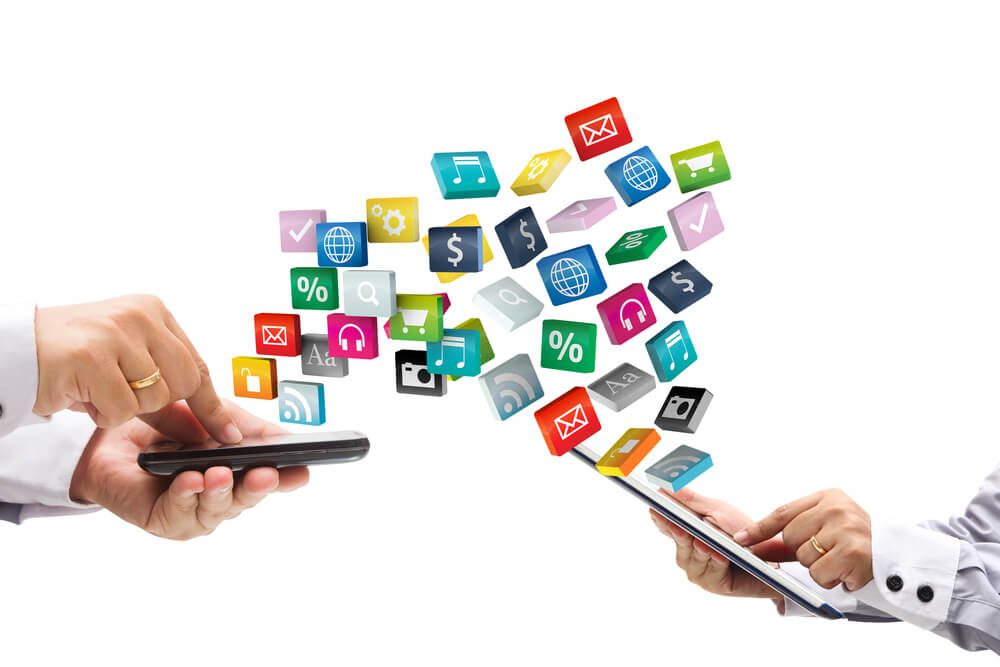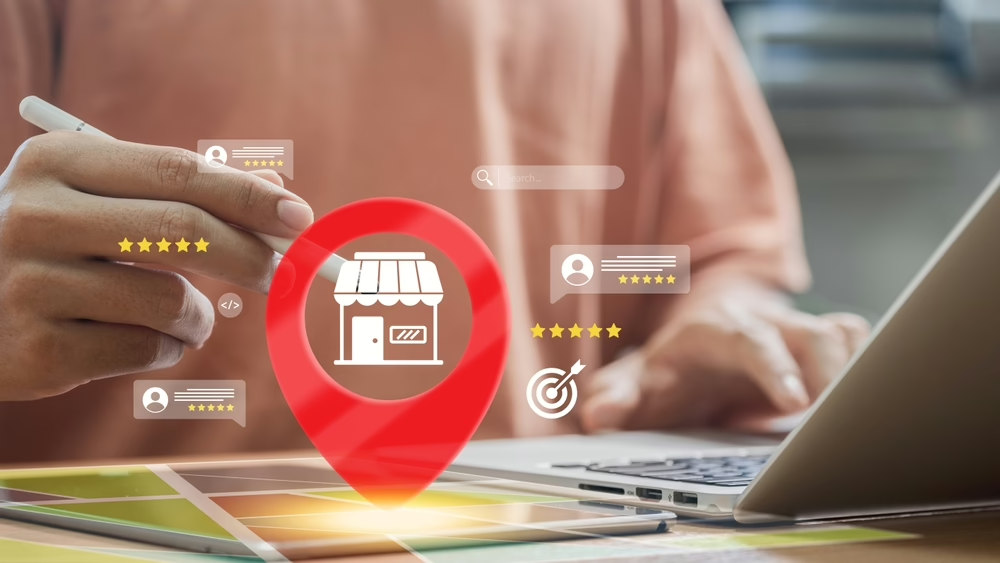
Top Mobile App Development Trends for SEO in 2025
Mobile apps have been particularly profitable since the pandemic and the rise of artificial intelligence (AI), making app development a hot topic. It is natural to wonder what a mobile app can do for your business.
Today’s top 10 app ideas, according to mobile app development agency experts:
 Apps fall into several categories: gaming, e-commerce, entertainment, productivity, and social media. You might be familiar with Genshin Impact, Amazon, Netflix, Google Drive, and Facebook. In other words, there is no shortage of choices for app ideas. Wanting an app for your business is not enough, though. You need a mobile app developer to advise you on choosing one that fits your brand and business goals. Below are ten of the most popular app ideas right now, each with a niche market to which it caters.
Apps fall into several categories: gaming, e-commerce, entertainment, productivity, and social media. You might be familiar with Genshin Impact, Amazon, Netflix, Google Drive, and Facebook. In other words, there is no shortage of choices for app ideas. Wanting an app for your business is not enough, though. You need a mobile app developer to advise you on choosing one that fits your brand and business goals. Below are ten of the most popular app ideas right now, each with a niche market to which it caters. Smartphones and tablets are not the only devices that get apps. Wearables do, too. The Apple Watch, for example, has separate app versions from those of the iPhone and iPad. Unlike the latter two, the former has plenty of potential for Internet of Things (IoT) applications. For example, unlike a smartphone, a smartwatch has sensors that allow it to monitor a person’s vitals, including heart rate and electrocardiogram (ECG), to warn them of potential dangers. That is not all, though. Some wearables can even measure environmental factors such as noise.
Smartphones and tablets are not the only devices that get apps. Wearables do, too. The Apple Watch, for example, has separate app versions from those of the iPhone and iPad. Unlike the latter two, the former has plenty of potential for Internet of Things (IoT) applications. For example, unlike a smartphone, a smartwatch has sensors that allow it to monitor a person’s vitals, including heart rate and electrocardiogram (ECG), to warn them of potential dangers. That is not all, though. Some wearables can even measure environmental factors such as noise. As mentioned above, chatbot apps have become increasingly popular in the wake of ChatGPT’s initial release in November 2022. Many developers have since raced to incorporate GPT models (3.5 and 4, to be specific) into their chatbots in an honest effort to replicate ChatGPT’s success. While ChatGPT still holds the crown for AI chatbots, replicas have profited from riding its coattails, amassing millions of downloads in only a few months. How do developers earn money from a chatbot? By locking premium features or unlimited usage behind a paywall.
As mentioned above, chatbot apps have become increasingly popular in the wake of ChatGPT’s initial release in November 2022. Many developers have since raced to incorporate GPT models (3.5 and 4, to be specific) into their chatbots in an honest effort to replicate ChatGPT’s success. While ChatGPT still holds the crown for AI chatbots, replicas have profited from riding its coattails, amassing millions of downloads in only a few months. How do developers earn money from a chatbot? By locking premium features or unlimited usage behind a paywall.
- Leverage cloud computing.
- Capitalize on AI’s popularity.
- Make productivity a game.
- Create apps for wearables.
- Make life smoother with IoT.
- Employ beacon technology.
- Create AR/VR experiences.
- Make an interactive chatbot.
- Offer on-demand services.
- Offer previews in an instant.
100+ companies trust us with their mobile app development needs. Watch the video below to learn why.
10 Best Mobile Apps To Develop Right Now
 Apps fall into several categories: gaming, e-commerce, entertainment, productivity, and social media. You might be familiar with Genshin Impact, Amazon, Netflix, Google Drive, and Facebook. In other words, there is no shortage of choices for app ideas. Wanting an app for your business is not enough, though. You need a mobile app developer to advise you on choosing one that fits your brand and business goals. Below are ten of the most popular app ideas right now, each with a niche market to which it caters.
Apps fall into several categories: gaming, e-commerce, entertainment, productivity, and social media. You might be familiar with Genshin Impact, Amazon, Netflix, Google Drive, and Facebook. In other words, there is no shortage of choices for app ideas. Wanting an app for your business is not enough, though. You need a mobile app developer to advise you on choosing one that fits your brand and business goals. Below are ten of the most popular app ideas right now, each with a niche market to which it caters.1. Leverage Cloud Computing
Cloud computing is a technology that uses remote servers to store data, files, and apps that you can then access over an active internet connection. Many apps used in business and everyday settings utilize cloud computing. Google Workspace apps are excellent examples of this. A cloud-based app keeps data in a remote location (the cloud) instead of on your device. The app is necessary to use the service from multiple devices without transferring data from one storage to another. This technology is popular in software as a service (SaaS).2. Capitalize on AI’s Popularity
You do not have to perpetually be online to know about the recent rise of AI apps, or at least the rise in awareness of them. That is partly thanks to the recent viral success of AI avatar filters and the rise of AI-powered chatbots, beginning with ChatGPT. Even now, new apps are coming out. With the upthrust of intelligent chatbots comes the race to produce the most advanced model with machine learning (ML). Perhaps the best part of developing AI and ML mobile apps is that both search engine optimization (SEO) and app store optimization (ASO) make them visible to users.3. Make Productivity a Game
The concept of “gamifying” something (i.e., adding traditional video game elements) is hardly new. It has been around since the beginning of app stores because developers recognized the value of making mundane tasks rewarding and entertaining. The best part is that it targets everyone. For instance, in June 2020, The Pokémon Company released an app called Pokémon Smile to teach and encourage children to develop good dental hygiene. That game allows its users to interact with many popular characters from the franchise during their tooth-brushing routine.4. Create Apps for Wearables
 Smartphones and tablets are not the only devices that get apps. Wearables do, too. The Apple Watch, for example, has separate app versions from those of the iPhone and iPad. Unlike the latter two, the former has plenty of potential for Internet of Things (IoT) applications. For example, unlike a smartphone, a smartwatch has sensors that allow it to monitor a person’s vitals, including heart rate and electrocardiogram (ECG), to warn them of potential dangers. That is not all, though. Some wearables can even measure environmental factors such as noise.
Smartphones and tablets are not the only devices that get apps. Wearables do, too. The Apple Watch, for example, has separate app versions from those of the iPhone and iPad. Unlike the latter two, the former has plenty of potential for Internet of Things (IoT) applications. For example, unlike a smartphone, a smartwatch has sensors that allow it to monitor a person’s vitals, including heart rate and electrocardiogram (ECG), to warn them of potential dangers. That is not all, though. Some wearables can even measure environmental factors such as noise.5. Make Life Smoother with IoT
While wearables employ some forms of IoT, health applications are not the extent of what IoT can do. IoT technology can also control smart appliances and smart homes by sending inputs through apps that transmit instructions to appliances with an active internet connection. It does not stop there, either, as quality of life (QOL) is only one aspect of IoT. It also has numerous uses in manufacturing to remotely control machines, monitor progress, and gather valuable data from the production line. All while keeping the workflow smoother and safer.6. Employ Beacon Technology
Like IoT, beacon technology uses apps to send signals and information to smart devices. The key difference between the two is the method of delivery. IoT typically relies on the internet or Bluetooth to connect with devices, allow remote access, and use sensors to collect data. On the other hand, beacon technology uses Bluetooth to send one-way signals and information to nearby smart devices to enhance the user experience. For example, American Airlines uses its app and Bluetooth beacons along airports to send users notifications on their flight information.7. Create AR/VR Experiences
Like AI, augmented reality (AR) in mobile apps is becoming increasingly relevant for business. Delivering exceptional user experience (UX) through interactive AR elements is highly profitable, as demonstrated by the IKEA Place app, which launched in late 2017. The app allows users to place to-scale 3D models of IKEA furniture through AR technology. It turns your living space into a virtual showroom where you can swap furniture in and out to test how it fits. That allows people to make informed decisions when buying from IKEA.8. Make an Interactive Chatbot
 As mentioned above, chatbot apps have become increasingly popular in the wake of ChatGPT’s initial release in November 2022. Many developers have since raced to incorporate GPT models (3.5 and 4, to be specific) into their chatbots in an honest effort to replicate ChatGPT’s success. While ChatGPT still holds the crown for AI chatbots, replicas have profited from riding its coattails, amassing millions of downloads in only a few months. How do developers earn money from a chatbot? By locking premium features or unlimited usage behind a paywall.
As mentioned above, chatbot apps have become increasingly popular in the wake of ChatGPT’s initial release in November 2022. Many developers have since raced to incorporate GPT models (3.5 and 4, to be specific) into their chatbots in an honest effort to replicate ChatGPT’s success. While ChatGPT still holds the crown for AI chatbots, replicas have profited from riding its coattails, amassing millions of downloads in only a few months. How do developers earn money from a chatbot? By locking premium features or unlimited usage behind a paywall.9. Offer On-Demand Services
As the name suggests, on-demand services are made available whenever and wherever the customer needs them. Some apps you might already be familiar with include Uber, Netflix, and Airbnb. The list of compatible services and industries covers a wide variety of businesses. They include transport, food service, entertainment, healthcare, and logistics, just to name a few. The need for local and professional home services also means that any small business can use the popularity of on-demand apps to increase reach and boost sales.10. Offer Previews in an Instant
Finding the right app can be time-consuming and frustrating for potential customers. First comes the search, followed by downloading, installing, and testing the app before deciding. So much time is spent just waiting for a download and installation to finish, especially for larger apps. You can bypass that and improve your UX by creating instant apps that people can immediately try from the Google Play Store without downloading anything. This allows users to try a limited version of your app without any hassle. If nothing else, you at least get more user feedback.Summing Up
Businesses have been on the move to develop mobile apps for their products and services due, in part, to how the global pandemic has altered their daily operations and consumer behavior. However, this should be a reason to rush into getting an app. A good app is the result of informed and careful choices. For instance, creating an on-demand app without having products or services that are in high demand seems like a waste of resources. Just as jumping on the AI trend without carefully considering its relevance to your business might be the reason it inevitably falls flat. Need help developing a mobile app for your business? Contact Digital Authority Partners (DAP) to learn how we can help.Want To Meet Our Expert Team?
Book a meeting directly here



